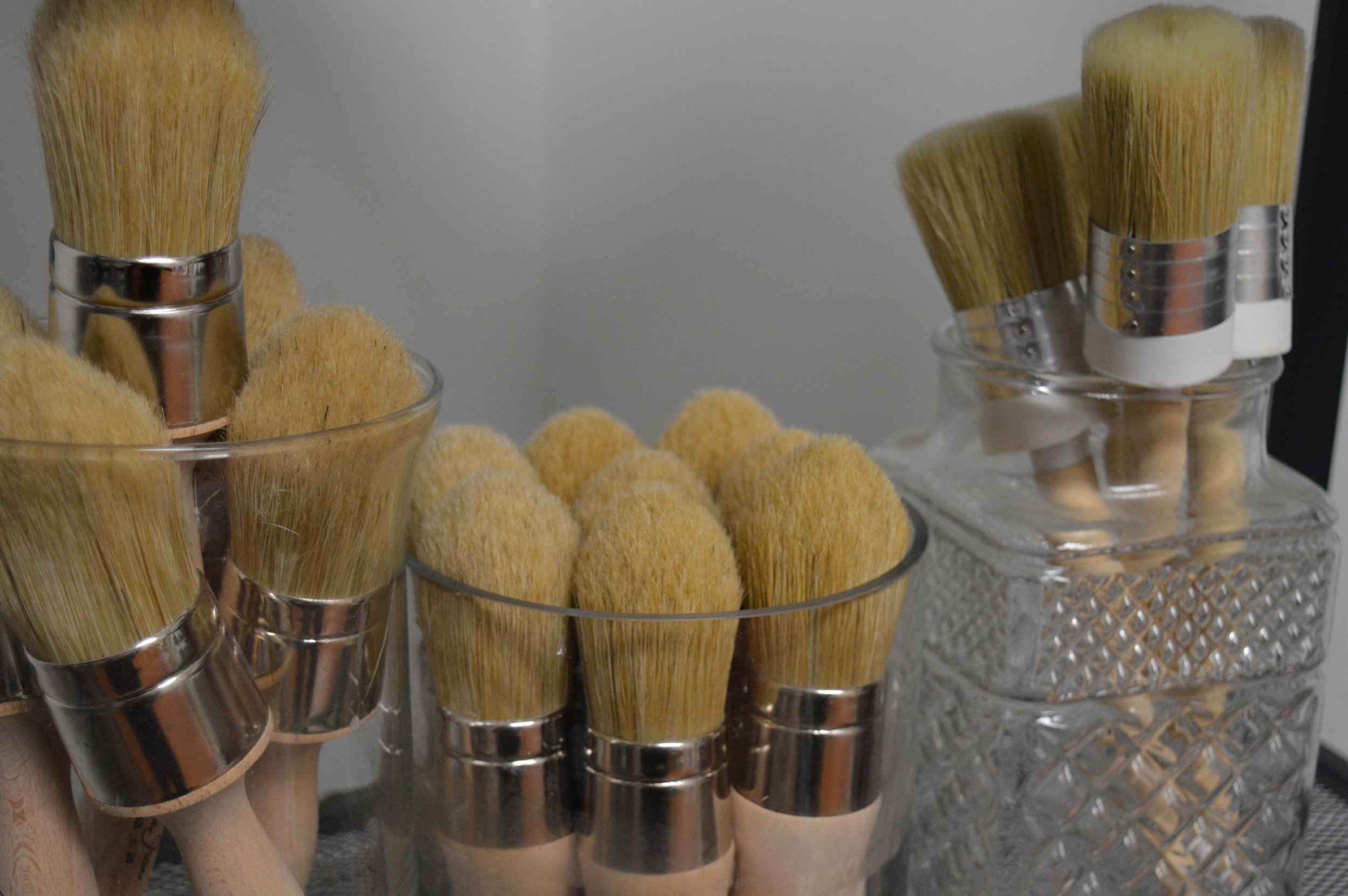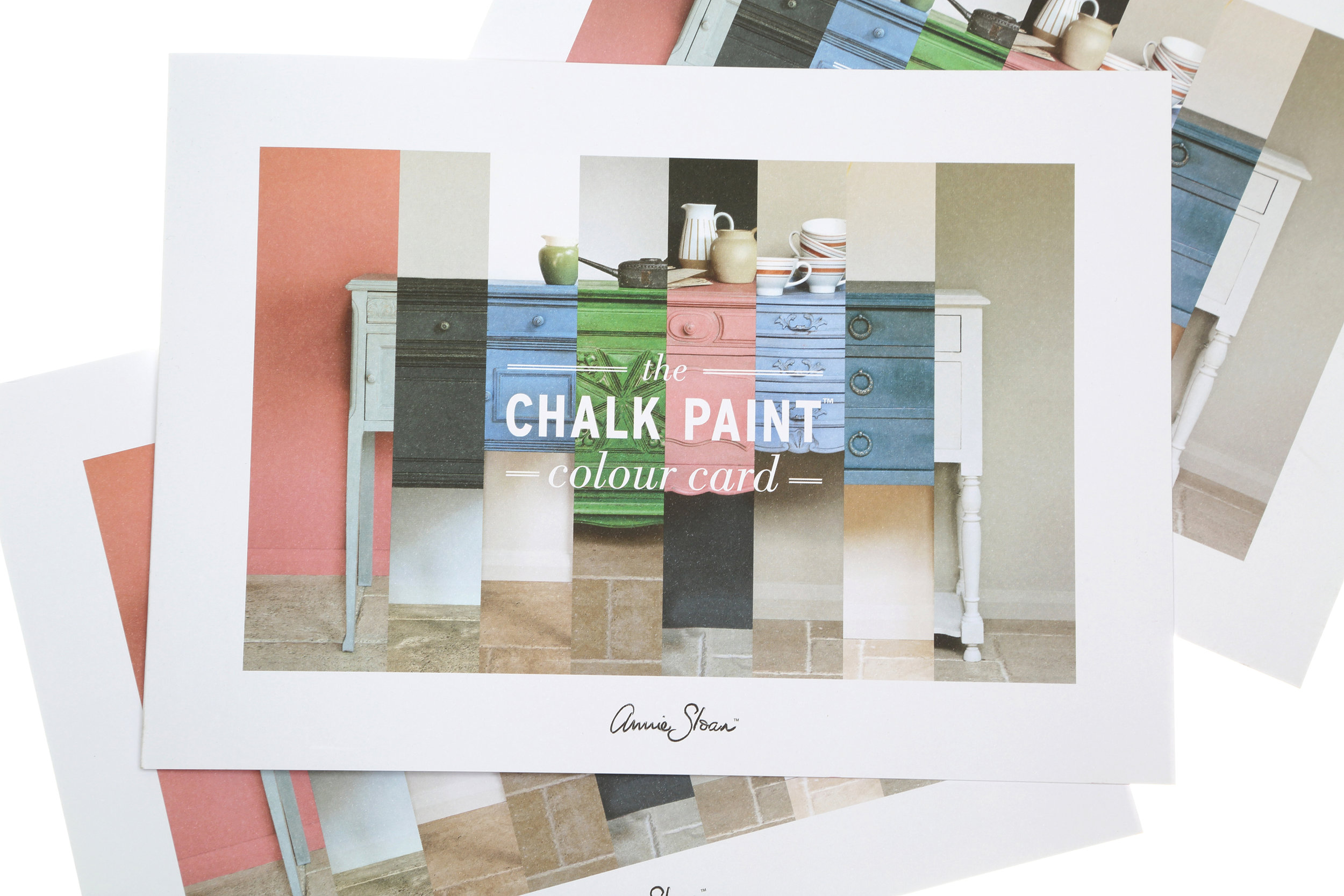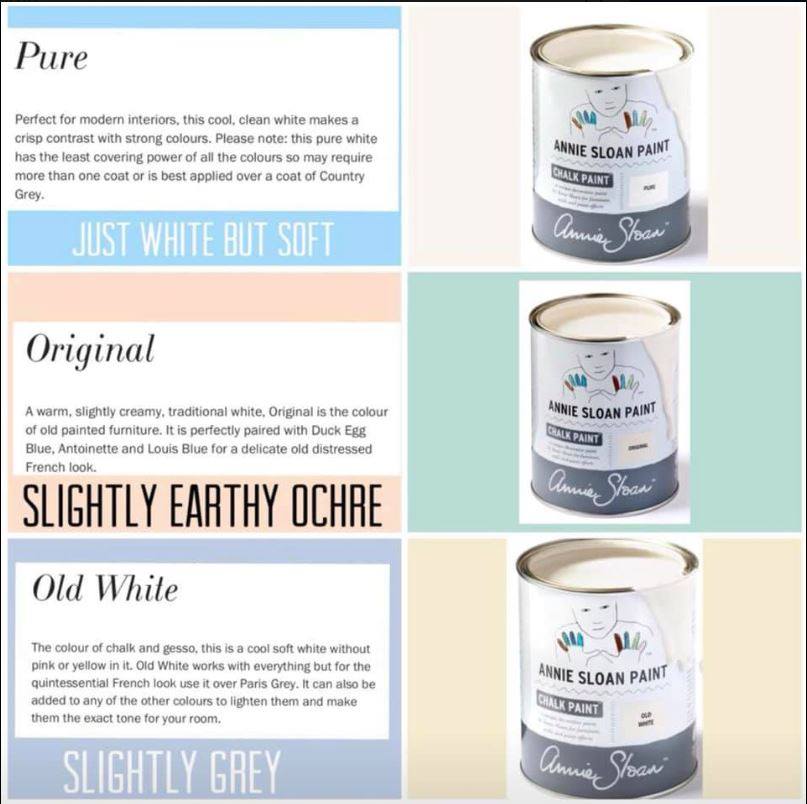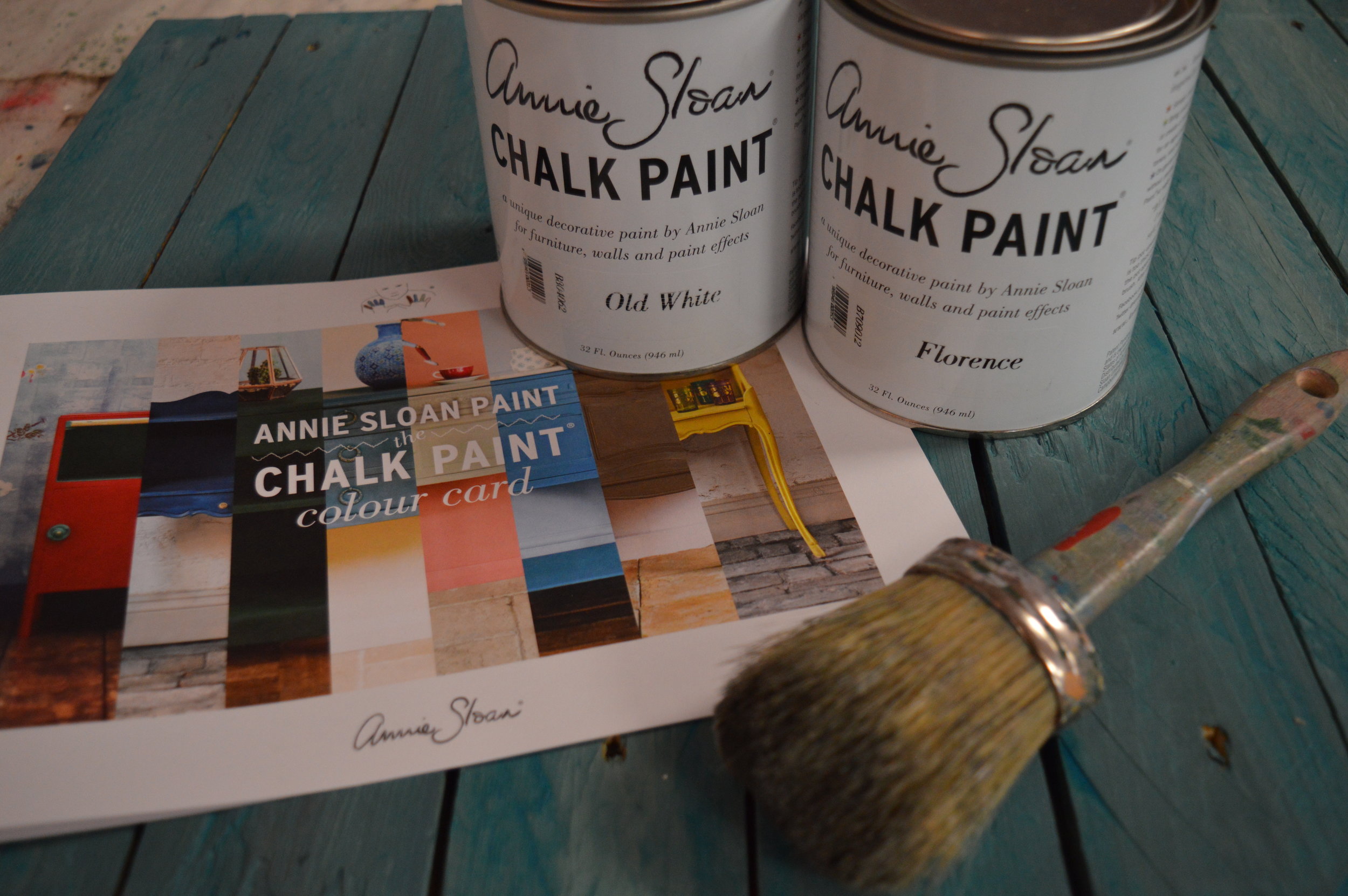
How to Open the New Chalk Paint® Litre Tin Lids
Have you bought an updated litre of Chalk Paint® but not been sure how to open the lid easily? Using these tips it should be a breeze for you.
Hello! Happy February. Our 2019 is in full swing, how about yours? Part of our new year has been an introductory to the updated packaging for the new Chalk Paint® litres. Have you tried the ‘global’ Annie Sloan paint yet? In case you’ve missed it, Chalk Paint® recently got a tiny update on the amount of clay in the formula, and therefore will be a little bit thicker in feeling going forward. We’ve been LOVING how creamy it is, and dare we say we didn’t know how it would ever possible for Chalk Paint® to get any better than what it’s been (since it’s so dreamy)… but it has. Our students and customers have been loving the update too.
The other part of that update is that the large tins will be transitioning over to litres from quarts, so you’ll be getting a tiny bit more bang for your buck as well. Opening the litre lids is a little bit of a learning curve, so we decided to highlight the best ways to open the lids without mangling them. All in all, they will be easier to press shut with just your hands going forward (instead of hammering them shut, eek).
Opening the tin
Ease the tin opener between the top of the lid and the edge of the tin.
Apply slight pressure and lift upwards.
Turn the tin a few degrees and repeat the motion. You will feel the air tight seal break and hear a “pop” noise.
Continue turning the tin until you have covered the whole circumference of the lid before attempting to pry the lid completely off.
Be as gentle and light handed as possible.
Following these steps will prevent the lid buckling or damaging the tin.
Closing the tin
To secure the lid after use, set in place on the top of the tin.
Place both palms on the lid and apply pressure down until you here a “pop”.
*The Wax, Lacquer, and Chalk Paint® tins are all the same, so you can use this method with every Annie Sloan tin. All metals are susceptible to some bending and denting if not handled gently.
If you haven’t made it to the ‘new’ formulated colors yet, visit us to get a quick painting demo to try it for yourself!
Happy Painting :)
What are the Differences Between the Three Chalk Paint® Whites?
Learn what the differences are between the now three colors of whites in the Chalk Paint® line!
Happy New Year and welcome back everyone. We’re moving into our 2019 with all the best intentions, and are getting some awesome new product additions in-stock. Some are the new Chalk Paint® by Annie Sloan colors… which includes a ‘new’ white— the color ‘Original’ which has been included in Annie’s European collection for some time now and is just new to us. We’re thrilled to finally have it though!
Due to the fact that ‘Original’ has some creamy, warm undertones, and that the global ‘Old White’ has thus always been a bit cooler than what we’ve had in the USA, Annie has now adjusted the ‘Old White’ to be consistent with the global coloring as well. So what are the differences between the three Whites now, and what do they look like? For starters, we always have waxed samples at our Shop & Studio for you to view in real life, but here is a fabulous educational diagram:
While there is not much difference in the new colorations versus the old, we definitely suggest you visit us to see samples in-person. If you’re trying to paint a piece to coordinate with some other previous whites, you may find that the ‘Original’ is the most similar to what your old ‘Old White’ used to be and may coordinate best.
Another major plus in ensuring the colors are 100% consistent throughout the globe is that there’s been a small update to the paint’s consistency as well. We find that the paint is even more luscious and creamy. Pop in for a demo with the new paint as well!
What Is Chalk Paint® and Why Do We Like It So Much? (How to Paint With Chalk Paint®)
We clear up some questions about Chalk Paint® decorative paint, and talk about its benefits and how to apply paint to furniture.
We get daily questions on what Chalk Paint® is, and what it can be used for-- which is a great thing! The more questions the better, and the better that we can help you with your projects. However with so many types and brands of paint out there in the world, it's easy to feel overwhelmed with choices. Besides talking about what Chalk Paint® is and why we recommend it, we'll also talk about why it stands out from imitation paint lines.
When we opened up our shop, we made the commitment to stock reputable, eco-friendly brands that anyone can work with (you heard that right, anyone!). Our stock is curated so to speak, with high-quality yet accessible options, and Chalk Paint® is one of those. Well then, what is it? Chalk Paint® is the brand founded by Annie Sloan in 1990, focusing on painting with one's own style and with a minimal-prep process. Chalk Paint® decorative paint is water-based and comes in 35 GORGEOUS colors in the USA, and Chalk Paint® waxes come in 4 colors/styles. Why is 'chalk' in the name? Well, that speaks to how the paint feels when it first dries in that it's super dry and porous, causing it to absorb its wax seal well.
How cool is it that the Color Cards come with swatches printed with REAL paint? These are very informative and accurate in helping you make your color choices, giving information about the history behind color names too.
Chalk Paint® decorative paint, waxes, lacquer, and other items are:
- low and no-VOC, and absolutely lead free
- non-toxic and eco-friendly
- certified 'Toy Safe' in the UK where the line was invented
- able to create silky smooth, modern finishes
- able to create highly textured finishes (like distressed or 'shabby-chic' looks)
- cleaned up with soap and water off brushes
- applied with a brush or roller (depending on technique)
- able to be sanded
- highly customizable, changeable, and able to be painted over to keep upcyclng
- little or no prep prior to painting- never needing to strip (prep can depend on your surface, and some techniques might require certain kinds of prep)
- able to hide surface flaws
- fixable for any unintended mistakes during the painting and waxing process
- suited for interior and exterior projects
- able to be mixed and layered with plasters, gilding leaf and waxes, crackle serums, and MORE
- suited for furniture, flooring, walls, decor, painted upholstery, stenciling
- applied to wood, metal, veneer, laminate, plaster, stone, brick, concrete, fabric, manufactured finishes (like from Ikea and Pottery Barn), glass, and MORE
Totally transforming a piece of furniture or space is still a process. This paint is not a miracle, but does help you to leave room for your design intuition to come through with playfulness, without having to worry about absolute perfection or "will this even stick to my surface?!". What's hand-painted has character, and can uplift any old piece and space!
Watch our little video demonstrating the absolute basics of applying your favorite color!
Also, there is only one Chalk Paint®. There are many alternate 'chalky-finish' or 'chalk-type' paints on the market, and there are recipes to 'make your own,' however none of these options are the same as Chalk Paint®, and they are usually acrylic or latex with additives. They do not have the same properties. Let's face it- if you're painting with an acrylic or latex, it's still just acrylic or latex (and all that plaster of paris mixing in 'make-your-own' recipes is actually quite toxic to breathe in, yuck!). There is a reason why we carry and use the Annie Sloan brand after trying many styles throughout the years. When we work with it, we are trying to get our look (or your look if we're helping you to customize your project), not just a matte/flat 'chalky' finish.
What we do encourage is that your DIY creative process be about learning new skills while leaving room for your own creativity to come through- and to make connections with others! Happy Painting xo











